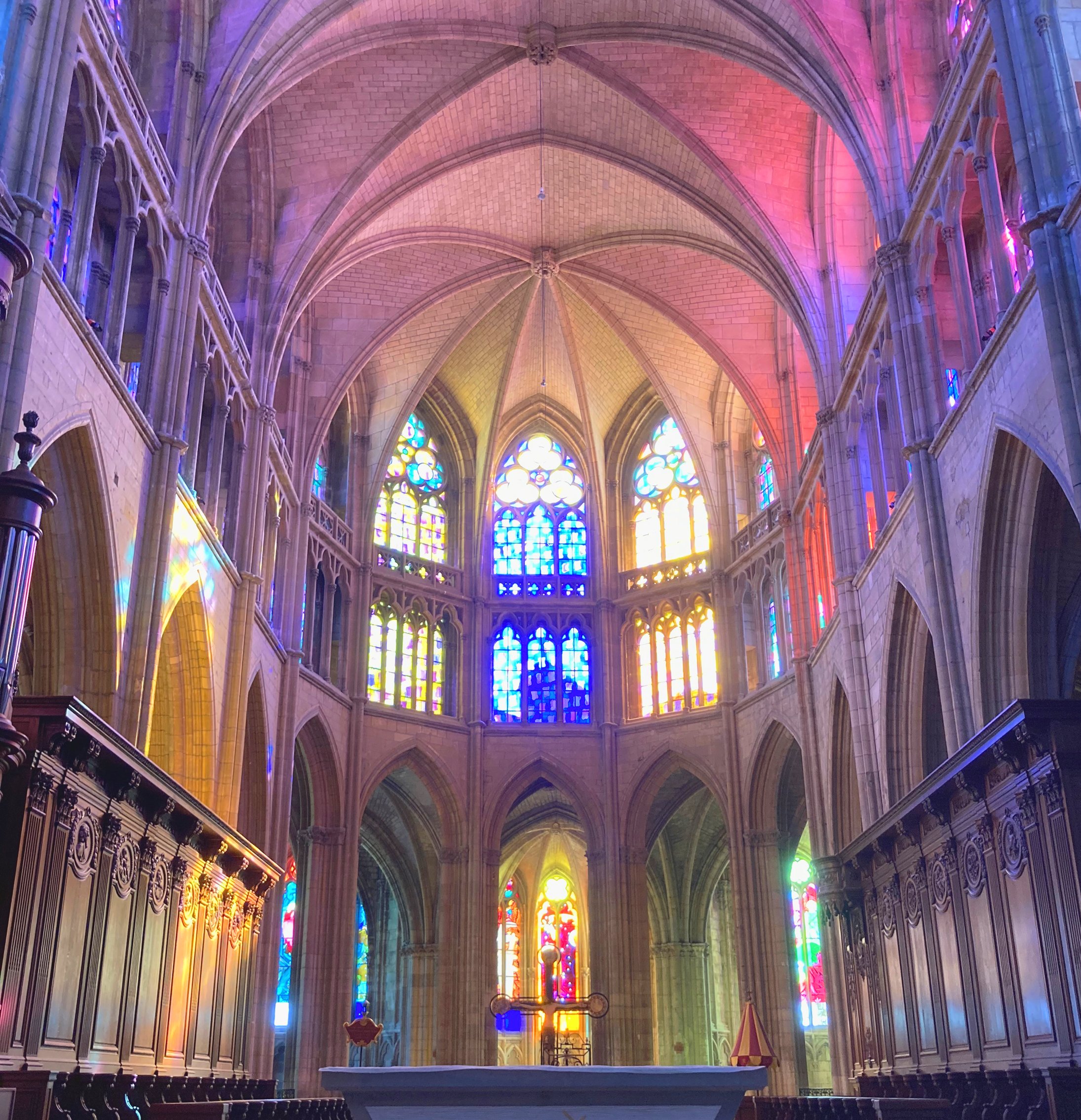Cathedral of St Mary of the Assumption, Vaison-La-Romaine
In this account of our road trip we are now on the way home, travelling from the south of France back to Calais. First stop Vaison-La-Romaine where, at the top of the medieval town with a view over Mont Ventoux, is the recently restored Cathedral of St Mary of the Assumption. All the windows are the work of the artist and Dominican preacher Kim En Joong, who has been making stained glass for French cathedrals and churches since 1989. These are the first I have seen in reality and the semi restored state of the cathedral seemed the perfect setting for his floating calligraphic style.
Vaison-La-Romaine, all windows by Kim En Joong, 2018-19 (above and below).
Kim En Joong travelled from South Korea, where he studied traditional taoist calligraphy and fine art, to Switzerland where he studied art history, theology and metaphysics before entering the Dominican order. For this commission of nineteen windows, Kim painted the designs on canvas, using mixed materials, tools and layers. These paintings were then interpreted by the German glass studio Derix, with air brushing, hand painting and some layering of the glass to get a perfect imitation of the paintings. The windows are abstract with no overt story telling, they seem both ancient and modern and I think, very safe.
Abbey St Philibert, Tournus.
Our next visit took us further back in time, with exquisite stained glass from the 1960s in the romanesque Abbey of St Philibert, Tournus, built from the eleventh century onwards. Most of the windows are by Brigitte Simon, an artist from a famous stained glass family in Reims and, with her husband Charles Marq, the maker of many of Chagall’s windows. Here, she said her goal had been ‘to extend the impression of the stones and to preserve in this mother-of-pearl space the full melody of its true colour, rose.’
Tournus, all windows by Brigitte Simon, 1964-7 (above and below).
As well as rose, there are glowing golden windows around the apse (top) and very subtle grey ones high up in the nave (above left). The most beautiful one is in a gothic transept windows, with a combination of pink, lilac and neutral coloured glass in wandering lead lines that match the cobwebs (below).
An account of the windows in the abbey tells us a lot about changes in stained glass fashions, some of them due to the course of history. The original alabaster windows from the 11th century were replaced by 12th century stained glass ones. These were destroyed in the 16th century Wars of Religion and another set was installed in the 19th century then blown out during the Second World War. When new windows were installed in the 1950s, they were the work of Pierre Choutet and Max Ingrand. Three of these have been retained, but the rest proved so controversial that they were removed and replaced by Brigitte Simon’s series which take a purely architectural even decorative approach. The controversial windows, at least the ones I’ve seen, are figurative with angular typically 1950s figures in muted colours (below left). The sort of thing we are so used to seeing in european churches that they fade into the background with no chance of offending anyone.
Tournus, Left, chapel window by Choutet or Ingrand. Centre and right, windows by Brigitte Simon.































